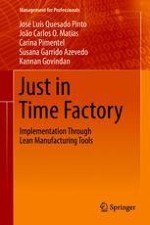2018 | OriginalPaper | Chapter
3. Just in Time
Authors : José Luís Quesado Pinto, João Carlos O. Matias, Carina Pimentel, Susana Garrido Azevedo, Kannan Govindan
Published in: Just in Time Factory
Publisher: Springer International Publishing
Activate our intelligent search to find suitable subject content or patents.
Select sections of text to find matching patents with Artificial Intelligence. powered by
Select sections of text to find additional relevant content using AI-assisted search. powered by
